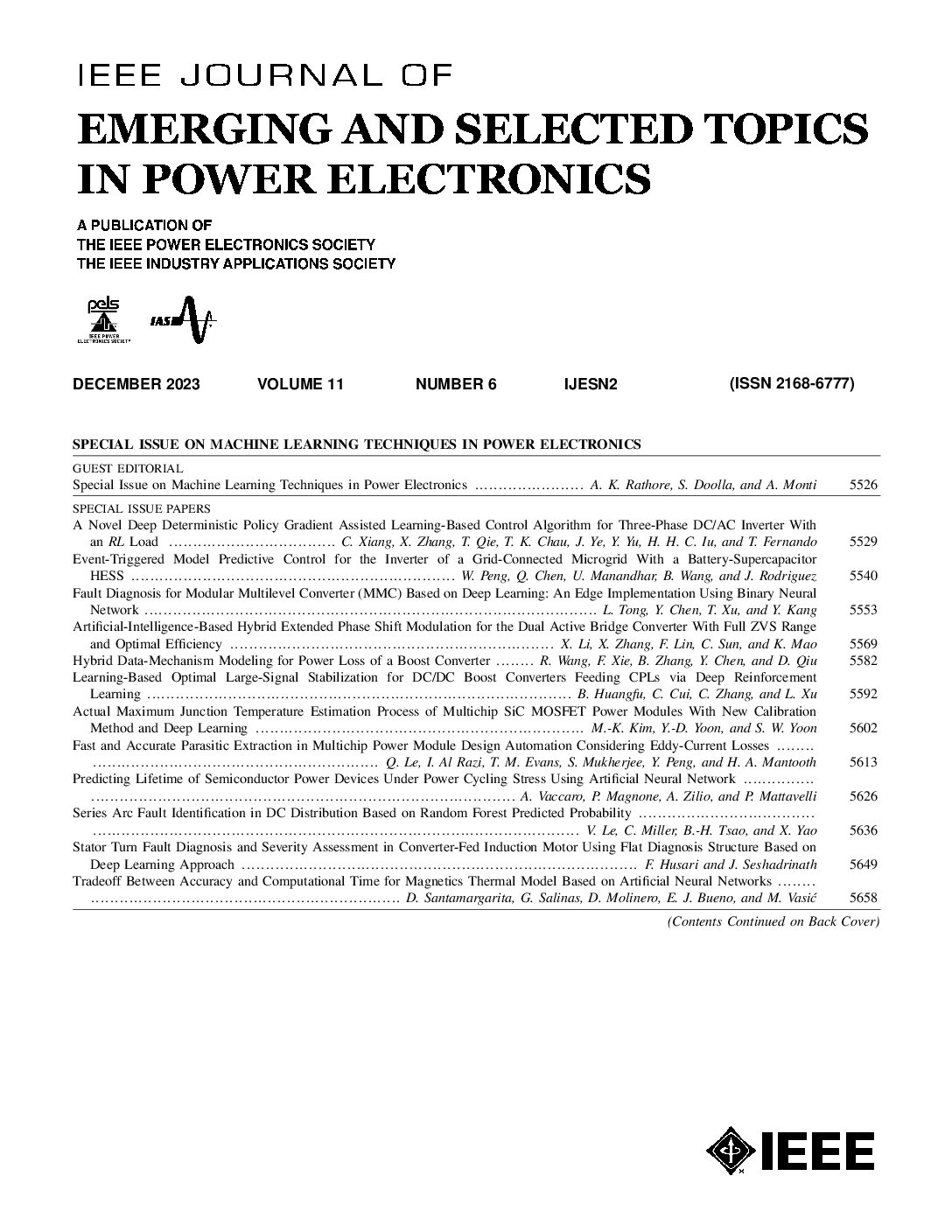航空电力推进系统中永磁同步电机自适应谐波消除模型预测电流控制
IF 4.9
2区 工程技术
Q1 ENGINEERING, ELECTRICAL & ELECTRONIC
IEEE Journal of Emerging and Selected Topics in Power Electronics
Pub Date : 2025-03-16
DOI:10.1109/JESTPE.2025.3570855
引用次数: 0
摘要
电力推进技术已成为飞机动力系统电气化的一个重要趋势。然而,电机驱动器在运行过程中会产生不必要的谐波,这可能导致驱动电机振动和内部组件退化等问题。过多的谐波直接影响电机性能和效率,潜在地影响飞机的飞行姿态。在严重的情况下,螺旋桨叶片可能会损坏。本文提出了一种基于自适应谐波消除(AHE)策略的模型预测电流控制(MPCC)方法,用于减少永磁同步电机(PMSM)驱动器中的不必要谐波。通过调整自适应滤波器的权重,该方法有效地从主输入信号中去除不需要的频率成分,由成本函数确定,从而产生理想的转换器输入参考电压。在永磁同步电机上的实验表明,该方法在保持系统响应速度的同时,有效地消除了电机驱动死区效应产生的谐波,从而提高了电力推进系统的稳定性。与死区补偿方法和谐波提取算法相比,该算法的总谐波失真(THD)分别降低了约47.36%和15.64%。本文章由计算机程序翻译,如有差异,请以英文原文为准。
Adaptive Harmonic Elimination Model Predictive Current Control of PMSM in Aviation Electric Propulsion Systems
Electric propulsion technology has become a key trend in the electrification of aircraft power systems. However, the motor drive generates unwanted harmonics during operation, which can lead to issues such as drive motor vibrations and degradation of internal components. Excessive harmonics directly impair motor performance and efficiency, potentially affecting the aircraft’s flight attitude. In severe cases, propeller blades may be damaged. Herein, a model predictive current control (MPCC) method with an adaptive harmonic elimination (AHE) strategy is utilized to reduce unwanted harmonics in permanent magnet synchronous motor (PMSM) drivers. By adjusting the weights of the adaptive filter, this method effectively removes unwanted frequency components from the main input signal, as determined by a cost function, resulting in an ideal reference voltage for the converter input. Experiments on a PMSM show that the proposed method effectively eliminates harmonics generated by the motor drive dead-time effect while preserving the system response speed, thereby enhancing the stability of the electric propulsion system. Compared with the dead-time compensation method and the harmonic extraction algorithm, the total harmonic distortion (THD) of the proposed algorithm is reduced by approximately 47.36% and 15.64%, respectively.
求助全文
通过发布文献求助,成功后即可免费获取论文全文。
去求助
来源期刊

IEEE Journal of Emerging and Selected Topics in Power Electronics
ENGINEERING, ELECTRICAL & ELECTRONIC-
CiteScore
12.50
自引率
9.10%
发文量
547
审稿时长
3 months
期刊介绍:
The aim of the journal is to enable the power electronics community to address the emerging and selected topics in power electronics in an agile fashion. It is a forum where multidisciplinary and discriminating technologies and applications are discussed by and for both practitioners and researchers on timely topics in power electronics from components to systems.
 求助内容:
求助内容: 应助结果提醒方式:
应助结果提醒方式:


